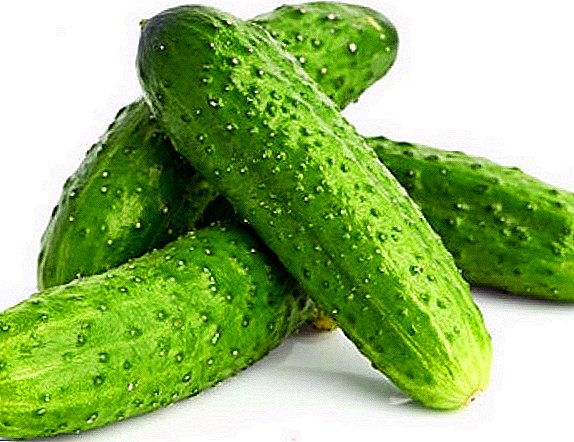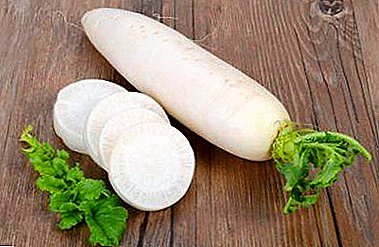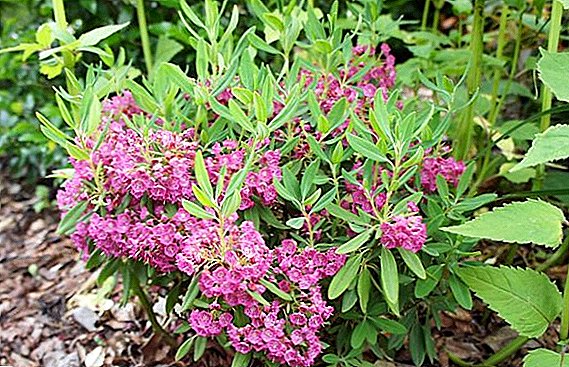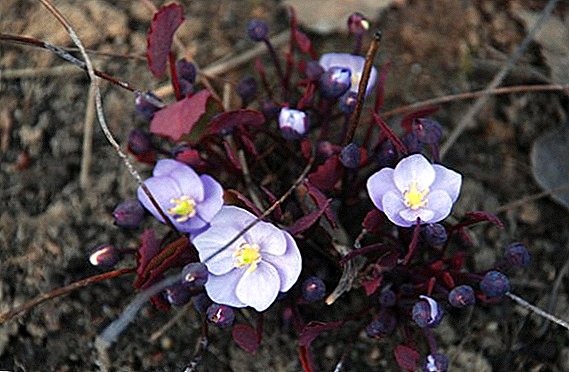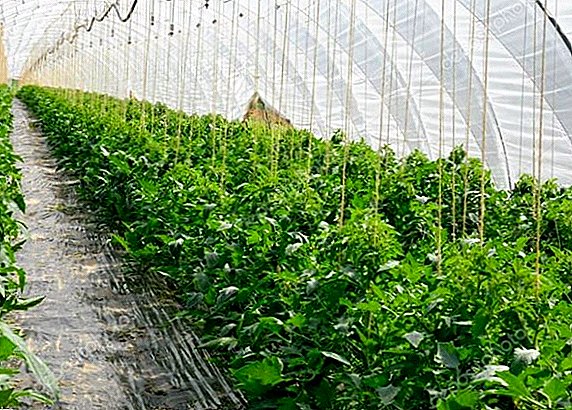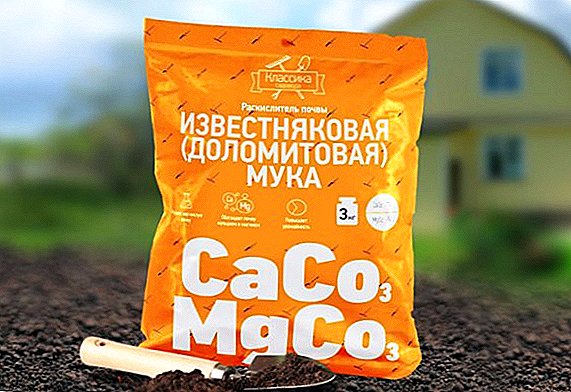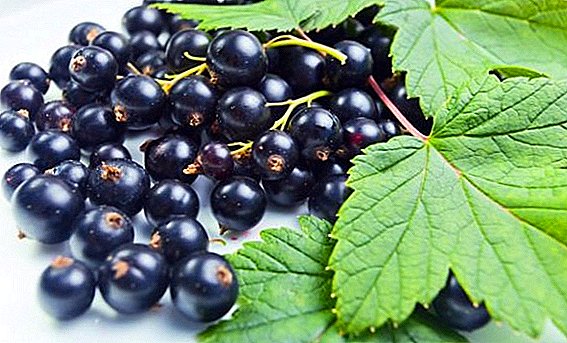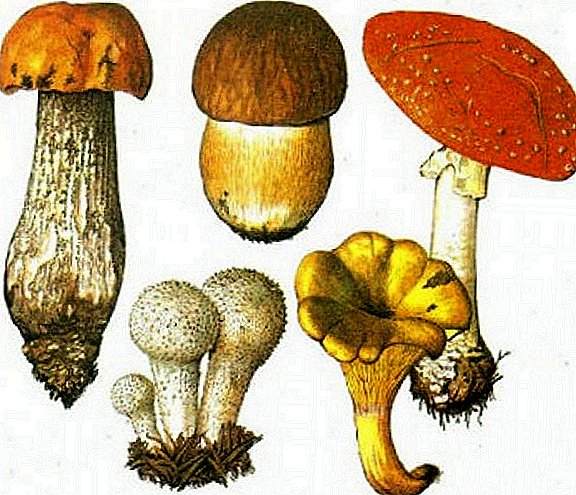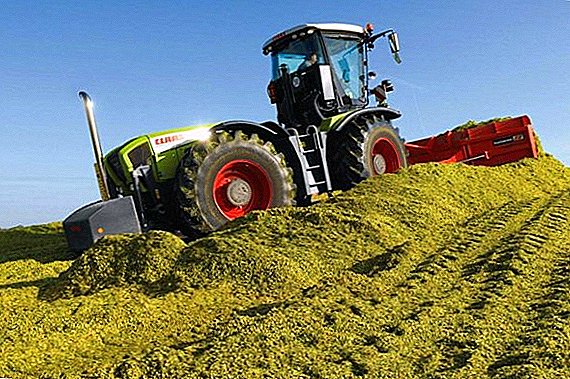 Siloing is a complex microbiological and biochemical process for preserving a juicy mass. Silage can be obtained by fermentation, that is, it is canning without oxygen. This is the most popular method of procurement. Use a green mass of herbaceous plants that are suitable for creating feed for livestock and poultry. Apply sunflower, corn, potato tops, roots and others. Silo is needed in agriculture for one simple reason - it contains a lot of nutrients and dietary properties. It is a valuable food for animals. Silage improves digestion, which helps livestock and poultry digest roughage. This article will tell you about creating a silo at home.
Siloing is a complex microbiological and biochemical process for preserving a juicy mass. Silage can be obtained by fermentation, that is, it is canning without oxygen. This is the most popular method of procurement. Use a green mass of herbaceous plants that are suitable for creating feed for livestock and poultry. Apply sunflower, corn, potato tops, roots and others. Silo is needed in agriculture for one simple reason - it contains a lot of nutrients and dietary properties. It is a valuable food for animals. Silage improves digestion, which helps livestock and poultry digest roughage. This article will tell you about creating a silo at home.
Corn silage
Corn silage has a high concentration of exchange energy, which reaches 12 MJ per 1 kg. It reduces the load on the body of livestock and poultry without reducing the energy nutritional value of their diet. Corn protein has a low digestibility (37%). Most of it does not split in the rumen of animals to ammonia, but decomposes in the intestine in the form of amino acids. So is the starch. Corn starch is completely absorbed by livestock and poultry, increasing their glucose levels. Due to this, the level of milk production in cows grows, and young animals gain weight gain better and faster. Also, starch has a beneficial effect on the normalization of metabolism.
Unfortunately, corn silage has a low protein nutritional value, excess acidity and other disadvantages. It is practically not suitable for feeding dry pregnant cows, because carotene does not turn into vitamin A.
Important! An excess of organic acids adversely affects the viability of newborn calves.For the preparation of silage corn mown in the phase of ripeness of the grain. It is crushed to 5 mm. Part of the whole grain should not exceed 5%.
 If the silo is finely crushed, then it will contain lactic acid and there will be no butyric acid. Lactic acid converts sugar into organic acids, and the silage is absorbed by livestock and poultry completely. Grind to the desired size will help self-propelled combines, but most often used a method of separate ensiling grain part of the corn. Above-ground, in-depth or semi-deep trenches are considered to be the best place to store corn silage. Most often it is used above-ground, since the processes of extracting feed are better mechanized. In this case, the possibility of flooding by groundwater is reduced.
If the silo is finely crushed, then it will contain lactic acid and there will be no butyric acid. Lactic acid converts sugar into organic acids, and the silage is absorbed by livestock and poultry completely. Grind to the desired size will help self-propelled combines, but most often used a method of separate ensiling grain part of the corn. Above-ground, in-depth or semi-deep trenches are considered to be the best place to store corn silage. Most often it is used above-ground, since the processes of extracting feed are better mechanized. In this case, the possibility of flooding by groundwater is reduced.
When choosing a trench, you need to take into account its dimensions in height (not less than 3 m) and width (selected taking into account the technology of extraction of feed). The silo is removed every day with a layer of 40 cm across the entire width. Do it better vertically. 10 days before the start of siloing, the trench needs to be cleaned, sterilized, whitened from the inside and patched tracks.
The silage mass must be isolated from the wind from the moment it is laid in the storage. Filling technology should be aimed at the rapid and complete cessation of contact with the draft.
At the bottom you need to lay out a layer of straw chop (50 cm thick), and then fill it with silo. The mass of the bookmark should be regularly sealed near the walls.
Silo should be covered with triple protection. The first layer is a thin and elastic stretch film, the second is a dense polyethylene film (it can also be covered with a protective net to protect the silo from the crows). The third is a weighty weighting agent.
The fermentation of silage lasts up to 6 weeks, but it is better to hold corn silage for 8 weeks, since acetic acid is formed during these couple of weeks. This increases the aerobic stability of the silo.
Important! If a to open the silo ahead of time, this will lead to undesirable problems in the form of oxygen ingress into it.After 8 weeks of exposure, you can select silage. The correct selection technique is as follows: after selection, a smooth surface should remain. In this case, less oxygen enters the silo and no heating occurs. If you adhere to all the above rules, then corn ensuration will be excellent with the highest quality.
 Polymer sleeves can also be used. Siloing begins after the sleeve is filled. The acidity at the same time quickly decreases, and this allows you to maintain high quality feed.
Polymer sleeves can also be used. Siloing begins after the sleeve is filled. The acidity at the same time quickly decreases, and this allows you to maintain high quality feed.Siloing improves feed efficiency and feed efficiency, and also affects the cost-effectiveness of dairy production. In silage pits store less economically than in the sleeves. All costs pay off over time due to high-quality feed preservation. In the sleeves, feed grain, corn, haylage, perennial pulp, alfalfa and others are harvested. There are many advantages of such sleeves:
- Low nutrient losses due to instantaneous cessation of air intake.
- No loss of silage in the extreme and surface layers of silage mass.
- Good compaction of silage mass.
- Full absorption of silage juice in the tank.
Did you know? Corn contains 26 elements of the periodic table and does not lose its useful properties even when canned. It is rich in fatty polyunsaturated acids, which helps prevent cancer, reduces the level of aggressive cholesterol, improves the functioning of the liver and intestines.
Sunflower silage
 Researches of scientists showed that ensiling of sunflower in different phases of vegetation shows different results of microbiological processes. If you collect plants at the beginning of flowering, then at high humidity the fermentation of the silo takes place quickly than if the harvest is carried out in the phase of seed ripening. It is important to note that the ensiling of this plant at the beginning of flowering leads to a decrease in the sugar content by 10 times, while the loss of protein is 10%.
Researches of scientists showed that ensiling of sunflower in different phases of vegetation shows different results of microbiological processes. If you collect plants at the beginning of flowering, then at high humidity the fermentation of the silo takes place quickly than if the harvest is carried out in the phase of seed ripening. It is important to note that the ensiling of this plant at the beginning of flowering leads to a decrease in the sugar content by 10 times, while the loss of protein is 10%.
In the seed ripening phase, the sugar level is reduced 5 times, and the loss of protein is 8%. The nutritional value of the green mass: in the flowering phase - 0.23 feed units, in the phase of ripeness of seeds - 0.25 feed units per kg.
In the finished silo we can observe the same pattern. In the flowering phase and in the maturity phase of the seeds, the nutritional value of the silage is 15% higher, and the amount of protein decreased by 40% per 1 feed unit.
therefore we recommend cleaning the sunflower to silage at the beginning of flowering. But before that, you need to sow sunflower. It is sown in pure form or mixed with legumes. Early crops provide a high level of green mass, and also allow you to finish the ensiling before harvesting grain crops.
During the harvesting of sunflower, the water level in greens is 80%, with a nutritional value of 0.13 feed units and 12 g of protein per 1 kg. Also, the plant contains 2% sugar and at 87% moisture, the sugar minimum is about 1.6%. It is also important to reduce the humidity to 70%, and this can be done by adding 10% of dry and well-ground feed during silage. If you add peas to sunflower silo, then you can do it without restrictions. It also ferments well with corn, while you can get high-quality feed that can be given to cattle and pigs.
Did you know? According to the Guinness Book of Records, the largest sunflower flower ever recorded in the world is 82 cm (Canada), and the highest sunflower was grown by M. Heijimh in the Netherlands, its height was about 7 meters.If you are late with cleaning the plant, the stems noticeably coarser, and the leaves dry and fall. This leads to a deterioration of the technological and feed quality of the sunflower and reduces the yield of nutrients per unit area.
 If you decide to use sunflower as a crop after harvest, it is better to start harvesting leaves and stems at the beginning of budding. The leaves contain a high level of crude protein (up to 300 g per 1 kg), a large amount of water. In this case, the feed is poorly ensiled and requires the addition of starter cultures of pure cultures, whey. They contribute to the rapid maturation of silage.
If you decide to use sunflower as a crop after harvest, it is better to start harvesting leaves and stems at the beginning of budding. The leaves contain a high level of crude protein (up to 300 g per 1 kg), a large amount of water. In this case, the feed is poorly ensiled and requires the addition of starter cultures of pure cultures, whey. They contribute to the rapid maturation of silage.You will need to dilute 5 g of dry yeast in 5 liters of water 2 hours before use. They are you and spray the mass.
Whey is used depending on the moisture content of the silage. You need to make 30 liters per 1 ton. In order to get high-quality silage from sunflower, you need to chop the stems evenly and carefully and tamp the silage mass well. To eliminate the loss of juice, a layer of straw cutting (50 cm in thickness) should be laid at the bottom of the storage. The mass must be covered with a film on top.
Ready silage contains:
- 2.3% protein;
- 6% fiber;
- 9.5% nitrogen-free extractives (BEV).
Important! The silo turns black in the air, so you need to carefully select it from the storage.
Sorghum silage
Sugar sorghum, which we recommend to use as a silo, contains a high level of sugar and is silage until full grain maturity. The silage from this plant is not inferior to corn.
 Before laying the silo you need to clean up the period of wax ripeness of grain. At this time, the sorghum forage mass contains a high level of solids, the optimum amount of water and a high yield of feed units.
Before laying the silo you need to clean up the period of wax ripeness of grain. At this time, the sorghum forage mass contains a high level of solids, the optimum amount of water and a high yield of feed units.
Laying sorghum in a trench should be layered (1: 2), and then compacted. The bookmark is completed with a layer of juicy green mass 80-90 cm thick. From above, the silo should be covered with film and earth.
Since when harvesting silage, sorghum loses 25% of nutrients, we recommend the use of preservatives, but this does not completely eliminate the loss.
It is best to use straw when ensiling. Undoubtedly, it allows you to significantly increase feed resources, eliminates the loss of sorghum nutrients, improves taste, does not require the use of preservatives and is laid in a trench in any weather.
We can also offer you non-waste sorghum ensiling technology. At the bottom of the trench you need to lay 100 tons of straw, tamp and get a layer of up to 1 m. On it you lay the sorghum with a humidity of 70%. Then it is shifted by straw in 2: 1 layers. The silo matures in about 2 months. It contains more lignin and silica than in corn.
Did you know? Grass sorghum is grown for animal feed, and its straw is used for the production of paper, wicker products, fences and roofs.
Rape silage
It is possible to make silage from rapeseed, which will contain 6.7 MJ of lactation energy. The only problem is that it contains undesirable substances that affect the taste of milk and animal health.
We turn to the manufacture of rapeseed silage. You will meet only one problem in this matter - a contaminated mass of foliage. It leads to the formation of butyric acid, therefore, we recommend that you use Cofacil Liquid (3 liters per ton of fresh mass). When using chemical preservatives, a high amount of nutrients is maintained (90%), and the finished silage can be used as early as 2 months after laying.
 We now turn directly to the technique of laying canola for ensiling. The rapeseed, which you have previously roughly crushed, is placed in a common pile and stretch the tarpaulin on the first phase until the silage mass settles. During the day, ground canola loses a lot of juice, which needs to be collected and eliminated. The volume of silage mass is greatly reduced, so after collecting the juice you need to carefully close it.
We now turn directly to the technique of laying canola for ensiling. The rapeseed, which you have previously roughly crushed, is placed in a common pile and stretch the tarpaulin on the first phase until the silage mass settles. During the day, ground canola loses a lot of juice, which needs to be collected and eliminated. The volume of silage mass is greatly reduced, so after collecting the juice you need to carefully close it.
Also, it is not allowed to raise the temperature in the mass for 3 days. It should not exceed 40 ° C. This leads to a decrease in protein and sugar in the silo by 30%.
The main reasons for the increase in the temperature of the rapeseed silage are poor tamping, a high level of moisture mass and a long bookmark.
Rapeseed silage should be given to animals, mixing it with other silos (grass, corn, sunflower). This should be done because the rapeseed silage contains sulfur-forming compounds, and the animals simply do not eat enough.
Did you know? Two types of resin are used from rapeseed, which is used in the manufacture of ink for printing newspapers.
Alfalfa silage
Alfalfa is very difficult to silage, but if you do it right, you will provide the animals with a rich supply of protein.
 Silo harvesting technology begins with the collection of alfalfa. Do it better during budding. At this time, alfalfa contains the maximum concentration of nutrients, crude fiber (280 g per 1 kg of dry matter). It also contains a lot of lignin, and the plant loses its digestibility very quickly. That is why alfalfa should be harvested in the growth phase with an optimal cutting length (40 mm). You can use preservatives. They should increase the breakdown of fiber.
Silo harvesting technology begins with the collection of alfalfa. Do it better during budding. At this time, alfalfa contains the maximum concentration of nutrients, crude fiber (280 g per 1 kg of dry matter). It also contains a lot of lignin, and the plant loses its digestibility very quickly. That is why alfalfa should be harvested in the growth phase with an optimal cutting length (40 mm). You can use preservatives. They should increase the breakdown of fiber.
We turn to the mandatory rules for the silting of alfalfa.
The first is that the plant should contain an average amount of dry matter (35-40%). The second - wilting lasts 40 hours and not more.
The suitability of alfalfa for ensiling is determined by the content of soluble sugars in water. By sugars we mean carbohydrates. They are amenable to fermentation. During the ensiling process, the sugar is changed to fermentation acids. That they preserve the silo.
We recommend that you collect alfalfa during budding, because at this time the nutrient content is as follows:
- Raw ash - 120 g / kg.
- Crude protein - 210 g / kg.
- Cellulose - 250 g / kg.
- Sugar - 1.0 g / kg.
- The energy value is 5.5 MJ.
 It is the high level of crude ash and protein that makes the alfalfa ensiling process difficult. We recommend the use of preservatives that contain lactic acid fermentation bacteria, such as Bonsilage Forte.
It is the high level of crude ash and protein that makes the alfalfa ensiling process difficult. We recommend the use of preservatives that contain lactic acid fermentation bacteria, such as Bonsilage Forte.In the case of using preservatives, the level of acidity decreases and the protein content stabilizes. Alfalfa is better to silage with other components, for example, corn, sugar beet or sorghum. This will improve the taste of feed, and animals will not turn up the nose of the trench.
Both components must be thoroughly mixed and evenly placed in a container. You can also add molasses (3%). This will give alfalfa silage a good taste and smell.
Adding straw to silage from alfalfa will reduce moisture and improve fermentation of silage. You need to mix 200 kg of straw with 800 kg of green alfalfa. The silo that you get will contain half the dry weight of straw, and this reduces the digestibility of the feed.
To improve fermentation, you can use another technology, such as haylage. This is canned herbal feed. It possesses the basic properties of high-quality silo, but the preparation of haylage is different in that for this silage it is necessary to carry out a two-phase cleaning.
Alfalfa should be mowed and left on rollers for wilting. During this time, the plant should reduce moisture to 60%. Then the grass is ground by a forage harvester. After that, alfalfa is laid in a trench and left for 1-2 months.
This option of ensiling has several advantages:
- You do not need to add preservatives to the silo.
- The mass of the transported feed from the field is reduced by 50%.
- Due to the release of silage juice and the formation of undesirable fermentation products, the loss of nutrients is eliminated.
- More feed is saved.
- When feeding animals receive more nutrients.

Siloing of melons
If you are thinking about what else silage is made of, then know that melon crops will do. You can use pumpkin, watermelon, zucchini or melon.
They need to be cut into pieces with sharp shovels and add 25% straw. Then the mixture should be passed through a silage cutter. The laying and storage of silage is carried out in the same way as previous cultures. You can still canned melons in silage pits, but you have to add 3% of salt to them. This feed is suitable for pigs and cows, but is used as a supplement to the basic diet.
Gourds must be stored intact, free from frost and in special dry storages. After you have laid the whole fruit for ensiling, you need to cover it with crushed grass.
Did you know? In fact, the pumpkin is a berry, and one of the largest in the world. Its fruits can weigh up to several hundred kilograms.
Siloing potato tops
Potato tops are considered to be a lightly syrupable feed product. Feed value - 0.2 feed units per 1 kg and 22 g of protein.  The only thing that can reduce the nutritional value of silage is contamination with earth. When tamping, it is well compacted and can tolerate a loss of quality when ensiling without a trench device.
The only thing that can reduce the nutritional value of silage is contamination with earth. When tamping, it is well compacted and can tolerate a loss of quality when ensiling without a trench device.
In this case, it is necessary to easily cover the trench so that the frost does not freeze the silage in winter.
Potato tops are fermented without grinding and laid fresh. Потери сухих веществ незначительны. При высокой влажности вам следует добавить 10% гуменных кормов или кукурузы. При влажности в 75% добавлять ничего не нужно.
More dry feed is laid in the lower layers, and less in the top.
If you still decide to use potato tops for silage, take into account the fact that the sugar in it will decrease.
Silage root crops
Root crops are also included in silage crops. This food is suitable for pigs and poultry. Feed root vegetables are good raw materials for creating vitamin flour in the fall.
 You can silage potatoes in boiled or raw form in pits or trenches. Raw vegetables are washed and minced. Then the feed is loaded into a trench and compacted. A lot of froth and juice stand out at this time. In order to preserve the juice, we recommend that you lay a layer of straw at the bottom, and the foam will not overflow, the vegetable porridge must be loaded 60 cm below the trench walls. The foam settles in 3 days. After that, you need to load a little more chopped potatoes and then cover.
You can silage potatoes in boiled or raw form in pits or trenches. Raw vegetables are washed and minced. Then the feed is loaded into a trench and compacted. A lot of froth and juice stand out at this time. In order to preserve the juice, we recommend that you lay a layer of straw at the bottom, and the foam will not overflow, the vegetable porridge must be loaded 60 cm below the trench walls. The foam settles in 3 days. After that, you need to load a little more chopped potatoes and then cover.
When boiled it is necessary to steam the washed tubers and knead them. Then, without waiting for the potatoes to cool, lay it in a trench, level and compact. You can also add 10% carrots or legumes.
After the storage is completely filled, the mass must be carefully covered.
Root vegetable tops you can silage without adding straw.
The botve contains: sugar - 11.9%, protein - 11.7%, fat - 2%, fiber - 10.5%, calcium - 1.3%, phosphorus - 0.3%, BEV - 52%, carotene - 132 mg.
Did you know? Potatoes can be considered a poisonous plant, because its berries are very toxic to humans: for poisoning, it is enough to eat 1-2 pieces. In order to get poisoned by solanine that potato tubers accumulate in the light, you need to eat about a kilogram of raw, unpeeled green potato tubers.
Grain-bean mixes
You can prepare high-quality feeds with the help of spinning. This is haylage, which is prepared from the vegetative mass of grain crops. Harvesting begins during the period of wax ripeness of grain (humidity - 60%).
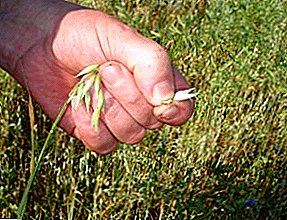 It is best to use multi-component cereal-bean mixtures, for example, barley, oats, peas.
It is best to use multi-component cereal-bean mixtures, for example, barley, oats, peas.
Plants contain many nutrients and less fiber than alfalfa haylage, but this silage is easily digested by animals.
Before starting to harvest silage or grain dumping, it is important to clarify the advantage of this technology, which lies in the fact that this mixture allows you to use the full biological potential of the productivity of grain crops.
It is also an advantage to prepare a grain spin using a feed mixture that the moisture content of the mixture during the collection in the wax ripening phase is 63%. During maturation, plants contain the optimal amount of nutrients, a lot of starch and protein.
In order to prepare the correct silage, you need to properly squeeze a lot of cereals. This can be done with the help of special tension cables. After laying the process of fermentation. Due to the immediate cessation of air access, you can protect yourself from the loss of nutrients. You can also use the preservative "Bitasil". It is possible to apply grain outflow in the form of feed after 4-6 months.
Did you know? Of Six thousand species of cereals bamboo - the highest plant, and among all the plants of the Earth and the fastest growing. At home, in Southeast Asia, bamboo is stretched to a height of 50 meters, its trunk, hollow straw, divided by transverse partitions, like all cereals, is up to 40 centimeters in diameter.
Combined Silo
The combination feed includes components such as root vegetables, which means that making silage from them is not that difficult. In addition, you can use carrots, pumpkins, potatoes, beets, green beans, cereals, cereal waste, chopped straw, seed flour and other ingredients. This set will provide high nutritional value of the silage, as it will contain sugar, starch, vitamins and protein.
In addition, the nutrients in the combined silo are better stored in storage. Such a silo is well eaten by animals all year round and does not require additional preparation before feeding.
When selecting components you need to know the following:
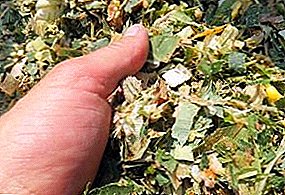 The nutritional value of the combined silage in 1 kg - 0.25 feed units.
The nutritional value of the combined silage in 1 kg - 0.25 feed units.- 1 kg of silage must contain at least 20 g of digestible protein and 20 mg of carotene.
- In the silo should be 5% crude fiber.
- A quality silo contains 1.8% lactic acid and no butyric acid.
- The palatability of the feed should be such that silage makes up 50% of the total diet of pigs.
It is the melon crops that are a valuable component of the combined silage. Their addition improves taste.
Rules for laying a combined silo:
- Before laying the silage in the trench, it is necessary to ensure the preservation of the silage juice mass. If it leaks, you lose a lot of nutrients from the feed.
- The ground mass must be thoroughly compacted, especially near the walls.
- Separate feed needs to be mixed and filled into the silo container in layers.
- At the end of the bookmark you need to cover the silo with an airtight film or tire.
- Above the trench you need to arrange a shelter to keep the silage from rain and snow.
Now that you know what a silo is, it’s easy for you to make it right. Follow the recommendations and you will get nutritious food for animals and birds.


 The nutritional value of the combined silage in 1 kg - 0.25 feed units.
The nutritional value of the combined silage in 1 kg - 0.25 feed units.